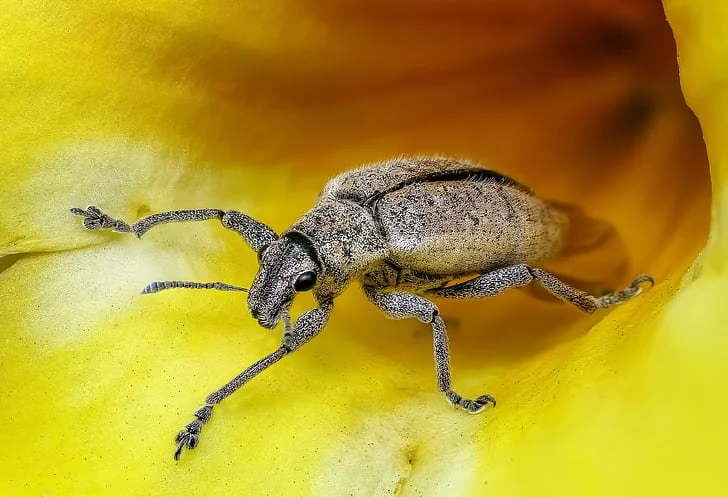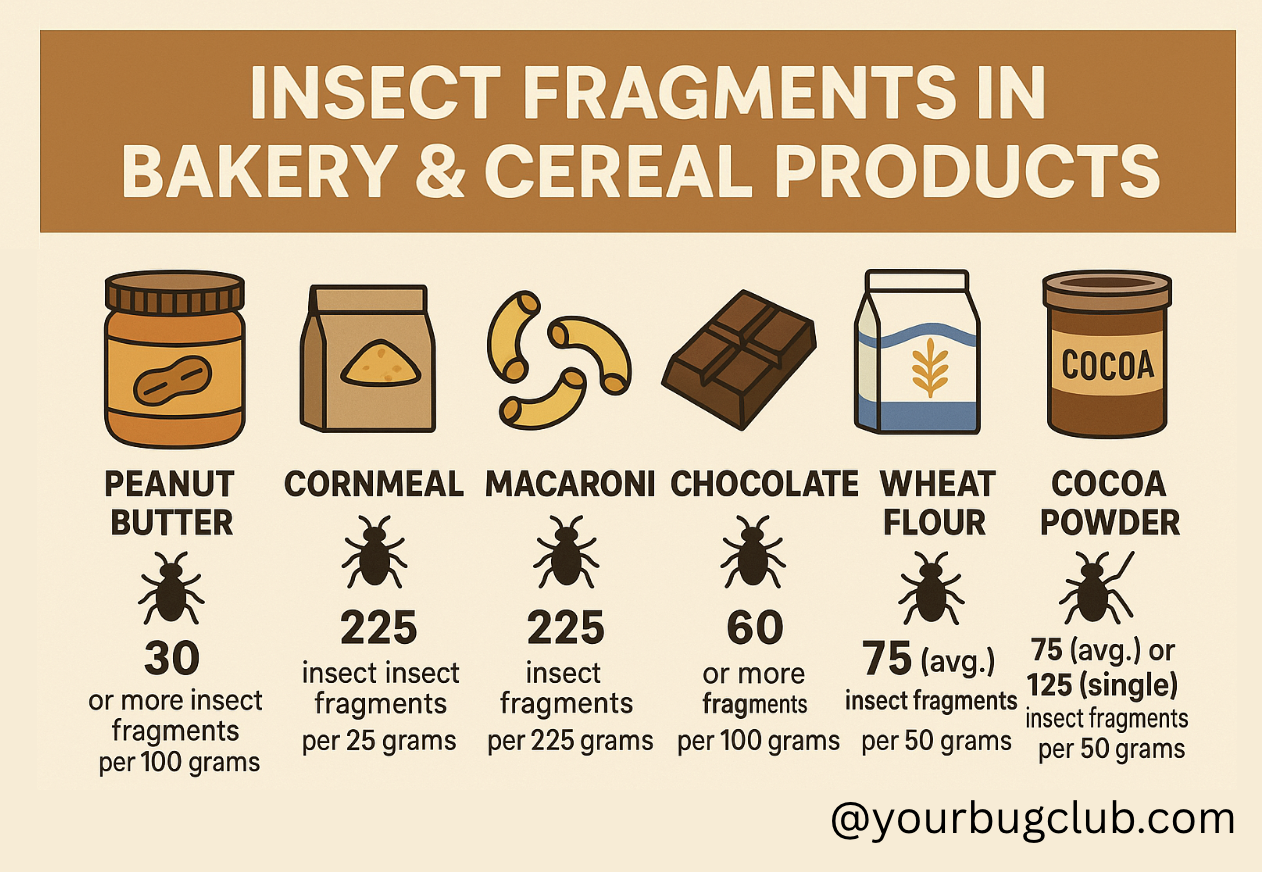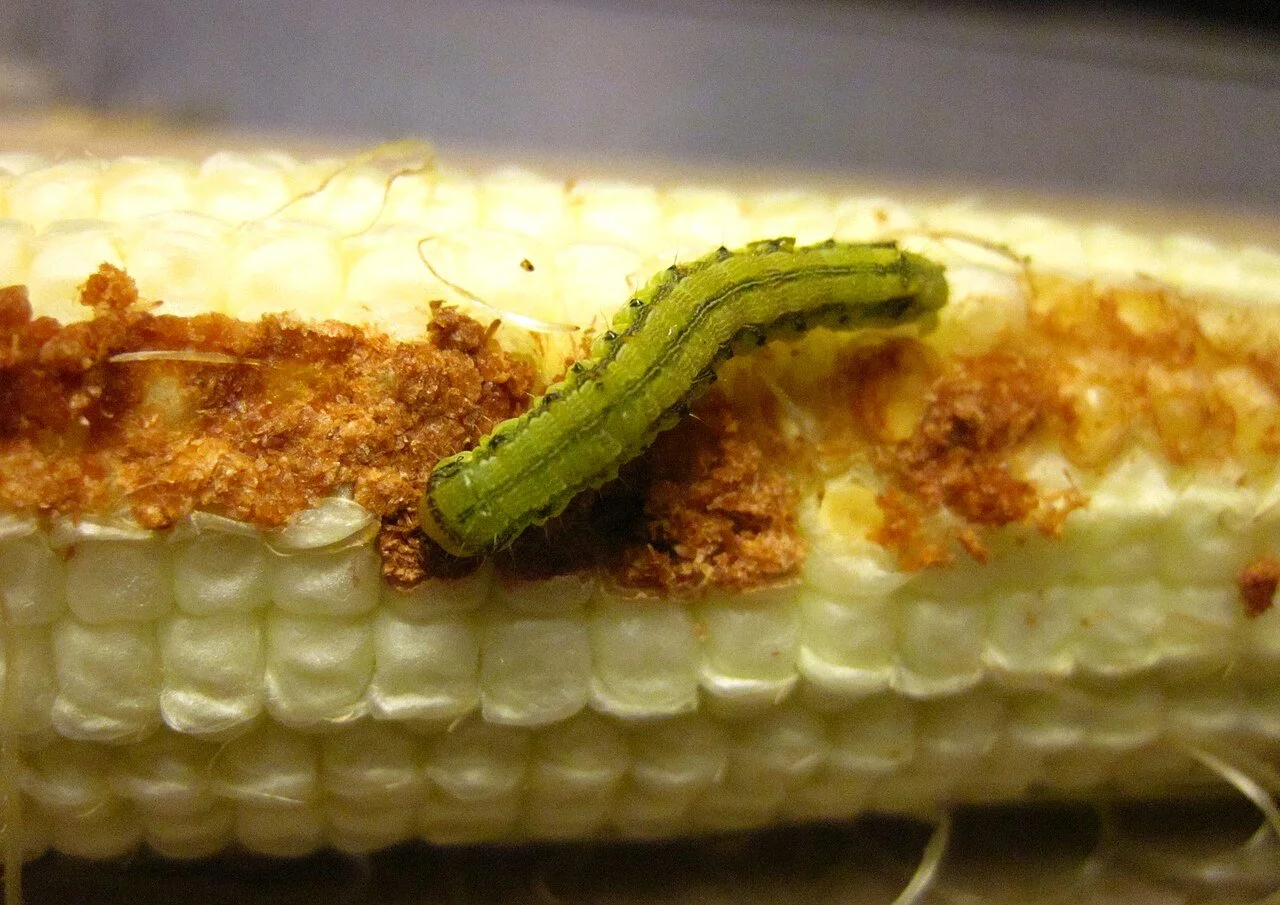You Eat Bugs Everyday, Here’s Just How Many
You may think you’re safe from eating bugs. But everyday you are eating thousands of insect body parts.
The Food and Drug Administration tracks the amount of bugs in our foods. Known as the Food Defect Action Levels, these guidelines determine how many insect eggs, body parts, or whole insect bodies can get by the inspectors before being flagged in a given product.
In fact you may be eating as many 140,000 pieces of insect matter each year. I considered taking a job at the FDA but was worried I would go blind counting body parts!
That doesn’t count the bug that just flew in your mouth after you read this!
Okay if that makes you a bit squeamish, let’s break it down a bit. The best way to control your bug consumption is to grow and make your own food. But you will quickly find out how challenging it is to keep those bugs away. I remember having hundreds of aphids on my broccoli.
Spices and Herbs
Let’s start with the worst, spices. Your spices are not just spices hundreds of ground up insects. If you’ve ever grown spices or herbs, you know bugs can get into every little crevice. And when you dry these and put them through the grinder, guess what else gets chopped up?
Every 10 grams of spice can contain over 1,000 insect bits, with oregano and marjoram being the biggest offenders. You are safest when you use sage, pepper, and curry. Just toss that with some olive oil and lemons on chicken and you are good to go.
But if you drink beer, it’s likely that you are drinking fermented aphids because the FDA lets brewers have as many as 2,500 aphids per 10 gram of hops. If you drink a liter of IPA that’s about 10 grams of hops, so those 2,500 aphids are all yours. That increases to 15 grams for a double IPA, and up to 3,700 aphids.
Don’t worry, lots of other animals like to eat aphids too, for their sweet sugary taste. So, if you notice notes of sugar, that’s probably just aphid juice.
Fruits
If you go to a pick-your-own orchard you know all too well what lies in those little holes in the fruit - bugs! So it’s hard to expect that mass fruit growers can keep all of those bugs out.
For fruit it’s going to be a choose your own adventure kind of day. So you’ll need to decide whether you are more grossed out by eating insect eggs, larvae or adults. Personally I have an aversion to eggs. I don’t know about you, but I was always told if I ate eggs they would hatch in my stomach - and I have seen enough alien movies to know what happens next.
Canned citrus juice and raisins can contain fruit fly eggs with the juice having as many as 5 eggs per 250 ml and raisins 35 eggs per 8 ounces.
If you prefer to eat insect adults, berries can have up to 10 insects per 500 grams and dates up to 5 per 100 grams. Even more hilarious is that when you eat figs you can eat up to 13 insect heads per 100 grams, but that’s probably because the fig is pollinated by the fig wasp and they lay eggs inside the fig. Without the wasp, you wouldn’t have figs.
Now if you like to eat insect larvae, go for the canned or frozen peaches which can have one or more larvae or canned citrus juice that can have 1 or more maggots per 250 ml.
Bakery and Cereal Products
Okay here’s the good stuff for you folks with a sweet tooth. Your prized chocolate sweets can have an average is 60 or more insect fragments per 100 grams. If you want less, eat some yummy peanut butter which only has 30 or more insect fragments per 100 grams.
If you’re into baking, or making pasta here are some stats for you. That wheat flour can have 75 or more insect fragments per 50 grams. And pasta lovers, look away - macaroni and noodle products can have 225 insect fragments or more per 225 grams. If you have old flour and pasta in your cabinet you know why there are so many bugs here. Stored grain pests like beetles often appear in these grains and you’ll see little brown beetles crawling around. They are so common that they cost producers an estimated $100 billion annually by eating 5-10% of global grain production.
Vegetables
If you’ve ever had a vegetable garden you are all too familiar with worms - or moth and butterfly larvae. I’ve opened up too many corn husks to find a few worms crawling around, ruining my perfectly plump kernels. But corn isn’t even the worst - it can only have 2 worms per 24 pounds of canned corn known as corn ear worms or corn borers. Black-eyed peas are similar, allowing about 5 or more cowpea curculio larvae per can.
Here’s where it gets out of control. Mushrooms can contain 20 or more maggots of any size per 100 grams of drained mushrooms. So if you think you saw a bug in that mushroom casserole, you may be right.
Sauerkraut and spinach can have as many as 50 thrips per 100 grams. Yes, these are tiny insects that you often have to eliminate from your house plants, so you may be happy to see their fate.
As someone who. gets more squeamish about eggs, it’s going to be the tomatoes I stay away from. Canned tomatoes can have up to 10 or more fly eggs per 500 grams and tomato paste as many as 20 or more fly eggs per 100 grams.
Now that you know you’re already eating bugs every day, you might as well do it on purpose and take a look at incorporating highly nutritious insects into your meals. There are over 2,000 species to choose from. Bon Apetit!









